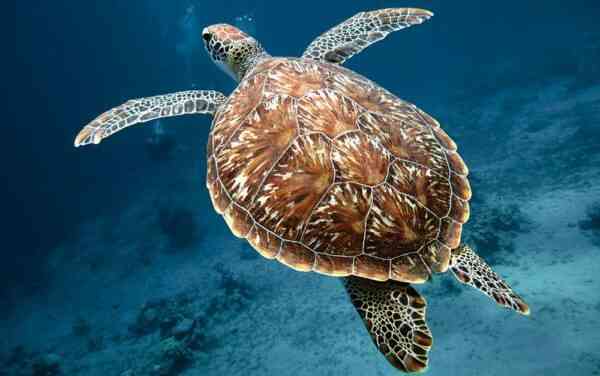Having appeared on Earth a long time ago, turtles never cease to amaze those who see them for the first time. Slow, clad in strong shells, they are long, and therefore in many cultures are considered a symbol of wisdom. That, however, does not prevent the inhabitants of a number of countries from eating them, and so actively that some of their species are now on the verge of extinction, and the collection of turtle eggs is severely punished by law.
Interesting facts about turtles
- Now there are about 330 species of them in the world, but there were once many more. Most of them died out in ancient times, and not because of human activity.
- The first turtles appeared on Earth about 220 million years ago.
- Some of them lead a predominantly terrestrial lifestyle, while others spend most of their time in the water.
- In some countries, fishermen catch turtles with stick fish. The fish is tied by the tail and rushes into the water, where it finds a turtle and sticks to its shell from below. Then the fishermen pull all this bunch onto a boat or ashore (interesting facts about fish).
- Freshwater turtles cannot live in salt water. As, however, and vice versa.
- Scientists still do not know who was the first ancestor of turtles, and from whom they come.
- The largest modern turtle is leatherback. With sizes up to 2.5 meters, it can weigh 800-900 kg.
- Turtles can cry. True, not from emotions – this is how they get rid of excess salt accumulated in the body.
- The meat of some turtles is poisonous because they themselves feed on poisonous fish or plants. This makes their meat toxic.
- The number of eggs laid by female giant tortoises depends on the population size in the place of residence. If there are a lot of turtles, and there is competition for food, few eggs will be laid, and if you need to breed intensively, there will be 2-2.5 times more.
- Due to the fact that turtles can go without water and food for a long time, in the days of sailing ships, sailors often used them as live canned food. As a result, these animals were exterminated on many islands. In the Galapagos alone, about 10 million turtles were killed in the 17th and 18th centuries.
- Most species of turtles are listed in the International Red Book.
- Turtles live for a long time, but the exact timing depends, among other things, on their species. The official longevity record is 188 years.
- Only brown turtles take care of their offspring. All other species lay eggs and forget about them forever.
- When the ambient temperature is high, females hatch from turtle eggs, and at lower temperatures, males. A similar situation is observed in crocodiles (interesting facts about crocodiles).
- Female sea turtles (meaning the species) become capable of breeding only at 27-30 years old. Males are a little earlier.
- Because leatherback turtles have a higher body temperature than all their other relatives, they can live in colder waters. But in this case, they need to eat very actively to maintain internal heat.
- Adult turtles of some species weigh about 1500-2000 times more than they did when they were cubs. For comparison, if these proportions were relevant for humans, then an adult could reach a weight of 7-8 tons.
- At low temperatures, the activity of these animals decreases, and movements become lethargic and slow.
- The slowest turtle is the gigantic one. On land, it moves at a speed of less than 0.4 km/h.
- A case has been officially recorded when a turtle starved for almost 5 years, but survived.
- One of the strongest animals are green sea turtles. They are able to carry as many people on their backs as can fit on its shell, that is, four or five.
- Turtles are one of the few animals that remember people by sight and distinguish them.
- How and birds, on long journeys they are guided by the magnetic field of the planet (interesting facts about birds).
- The number of eggs that a female can lay at one time is directly related to her size. The older and larger it is, the more eggs it can have.
- Slow on land, in the water some turtles can reach impressive speeds – up to 35 km/h.
